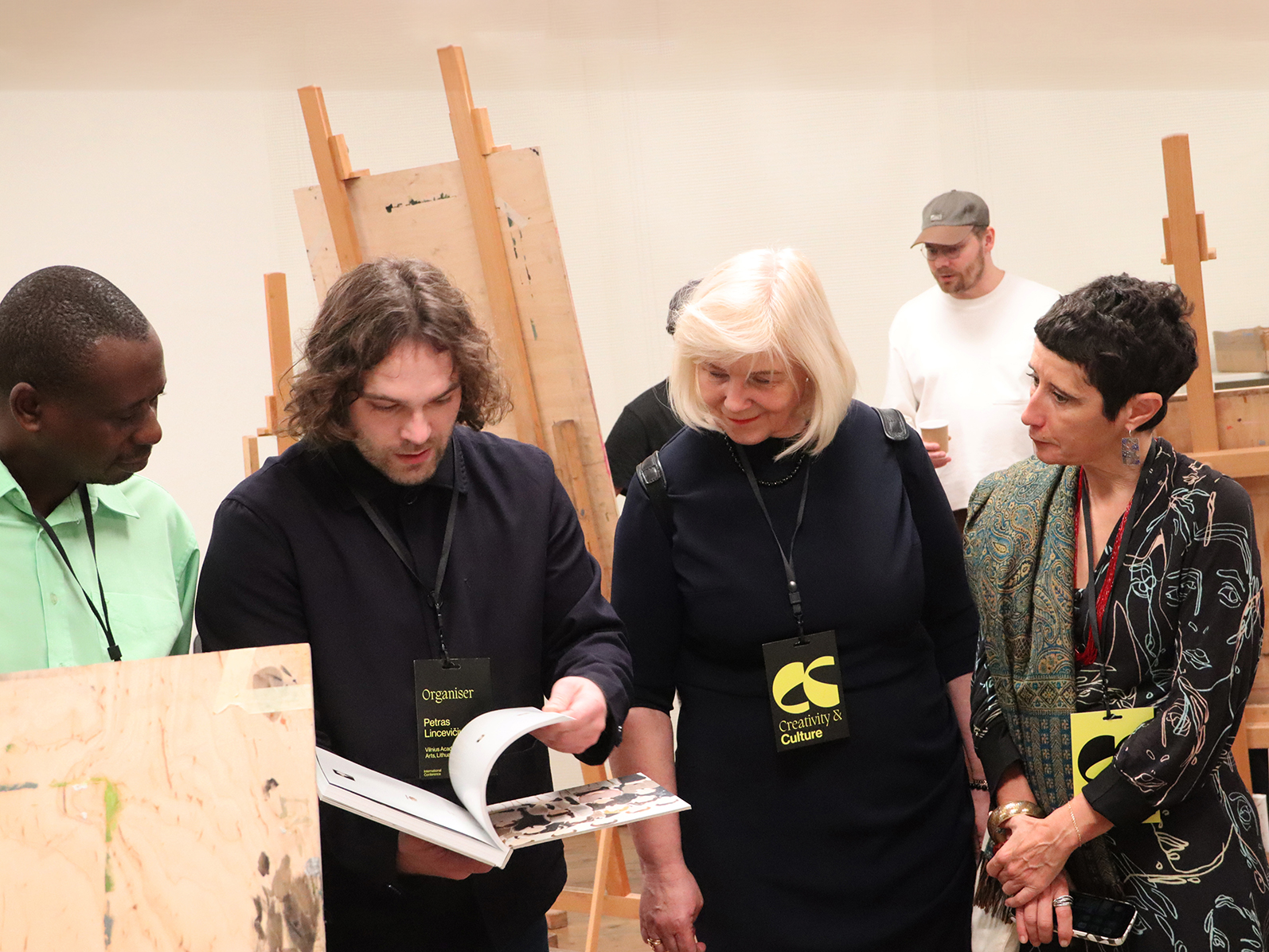 The 16th International Scientific Conference "Creativity and Culture", held in Kaunas, stood out not only for its interdisciplinary content, but also for its form—creative workshops led by professional artists accompanied scientific presentations. An event organised by the “Cultural Industries and Innovations” research group at the Institute of Social Sciences and Applied Informatics of the Kaunas Faculty of Vilnius University, in collaboration with the Kaunas Faculty of Vilnius Academy of Arts, discussed how culture can become a powerful force for positive change. Artists, students, and cultural professionals from Lithuania and other countries who participated in the programme shared new ideas and established important scientific and cultural cooperation contacts.
The 16th International Scientific Conference "Creativity and Culture", held in Kaunas, stood out not only for its interdisciplinary content, but also for its form—creative workshops led by professional artists accompanied scientific presentations. An event organised by the “Cultural Industries and Innovations” research group at the Institute of Social Sciences and Applied Informatics of the Kaunas Faculty of Vilnius University, in collaboration with the Kaunas Faculty of Vilnius Academy of Arts, discussed how culture can become a powerful force for positive change. Artists, students, and cultural professionals from Lithuania and other countries who participated in the programme shared new ideas and established important scientific and cultural cooperation contacts.
Dialogue between science and art
Organisers of the event "Creativity and Culture", Prof. Dr Virginija Jurėnienė (Kaunas Faculty of Vilnius University) and Prof. Jonas Audėjaitis (Kaunas Faculty of Vilnius Academy of Arts), unanimously agree that this year's conference took a qualitatively new step forward. According to them, a new stage began two years ago, with cooperation between the Kaunas Faculty of Vilnius University and the Kaunas Faculty of Vilnius Academy of Arts, which provided an opportunity to combine art management with creativity and led to the project's main strength: interdisciplinarity.
Prof. Dr Virginija Jurėnienė pointed out that the connection between art and technology is growing stronger than ever, so modern creators need to be strategists, managers, and people who understand artificial intelligence tools, innovations, copyright risks, and even blockchain technologies.
Prof. Jonas Audėjaitis emphasised that the conference format, which encouraged the emergence of new ideas and dialogue between representatives of various disciplines, helped create a platform where everyone could express their opinions and views, and in return, gain knowledge from the experiences of other participants.
Not only scientific papers, but also creative processes
The highlight of this year's conference was a five-day creative workshop with international mentors Sarah Simblet, Donatas Inis, Ismini Samanidou, Monika Žaltauskaitė-Grašienė, Gideon Rubin and Petras Lincevičius. This part included both practical experiments and conceptual discussions. The creators' works were displayed in public spaces in Kaunas and at an exhibition in Panemunė Castle. The event organisers' idea to combine scientific presentations with practical activities fundamentally changed the approach to traditional scientific conferences.
In an interview published before the conference began, the artist Ismini Samanidou (Greece and the United Kingdom) emphasised the importance of counterweight in a rapidly changing world. “I often speak about the importance of looking back to look forward”, she said, talking about how textiles can help create new connections between people.
In her report, the cultural policy expert Cristina Farinha (Portugal) analysed the signs of a crisis in cultural cooperation—market pressures, global turbulence, restrictions on the mobility of artists—and called for the search for fairer and more sustainable models of cultural partnership. Another keynote speaker at the conference, the director of the Lithuanian National Museum of Art, Arūnas Gelūnas (Lithuania), spoke about cultural memory. According to him, it is culture and art that give people resilience, even in difficult times.
What made this year's conference stand out?
The 16th International Scientific Conference "Creativity and Culture" is currently the only conference in Lithuania that directly links scientific research to artistic practice. It spread the message to universities, researchers, and professional artists that it is possible not only to analyse scientific achievements, but also to exchange ideas directly through the creative process. During the conference, cultural professionals from various countries and fields had a unique opportunity to participate in interdisciplinary projects and establish long-term cooperative ties. A total of 30 artists participated in this interdisciplinary project, and 50 speakers from Lithuania, Mongolia, Vietnam, Spain, Portugal, Greece, Latvia, Italy, Ukraine, Romania, and other countries gave scientific presentations.
The solemn closing ceremony of the conference marked another significant milestone in the week-long joint journey of scientists and artists. On November 22, the event participants gathered at Panemunė Castle, visited an exhibition of artworks developed during the creative workshop, toured the castle premises, and enjoyed a concert of Baroque music.
The culture and politics expert Cristina Farinha was delighted that it was a very inspiring and unexpected event, providing an opportunity for scientists and artists to socialise and get to know each other. “I was very surprised by the exhibition. Usually, the work done in creative workshops does not yield such results. It's more about processes, and ultimately what you see is the great potential that comes when several people work together”, C. Farinha shared her thoughts.
This year's conference undoubtedly strengthened international dialogue between scientists and artists, provided an opportunity to work with international mentors, and emphasised the importance of creativity in an interdisciplinary environment. The organisers of the global meeting hope that the ideas generated during the week-long event will inspire long-term projects that will help initiate cultural change not only in Lithuania but also abroad.
Does such an academic and creative platform have growth prospects? “Definitely!” claims the scientist Cristina Farinha.
The 16th International Conference “Creativity & Culture” (CC2025) has received financial support from the Research Council of Lithuania (LMTLT), agreement No S-MOR-25-24.